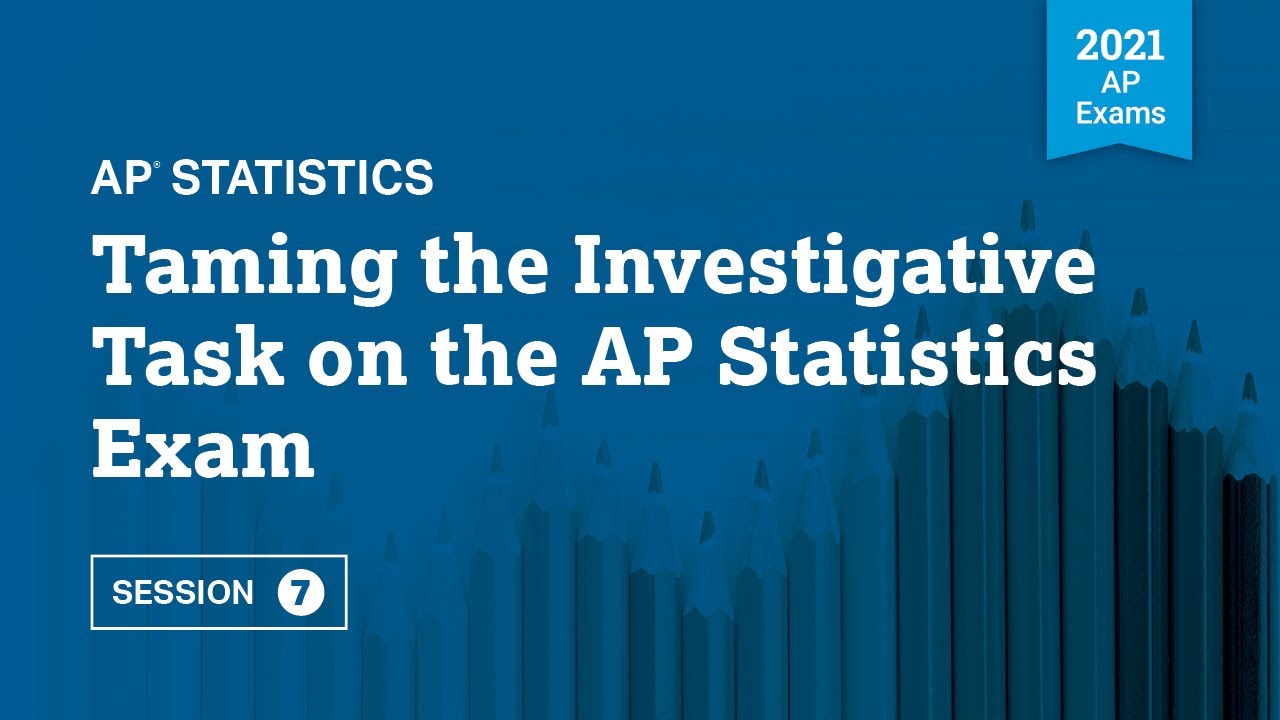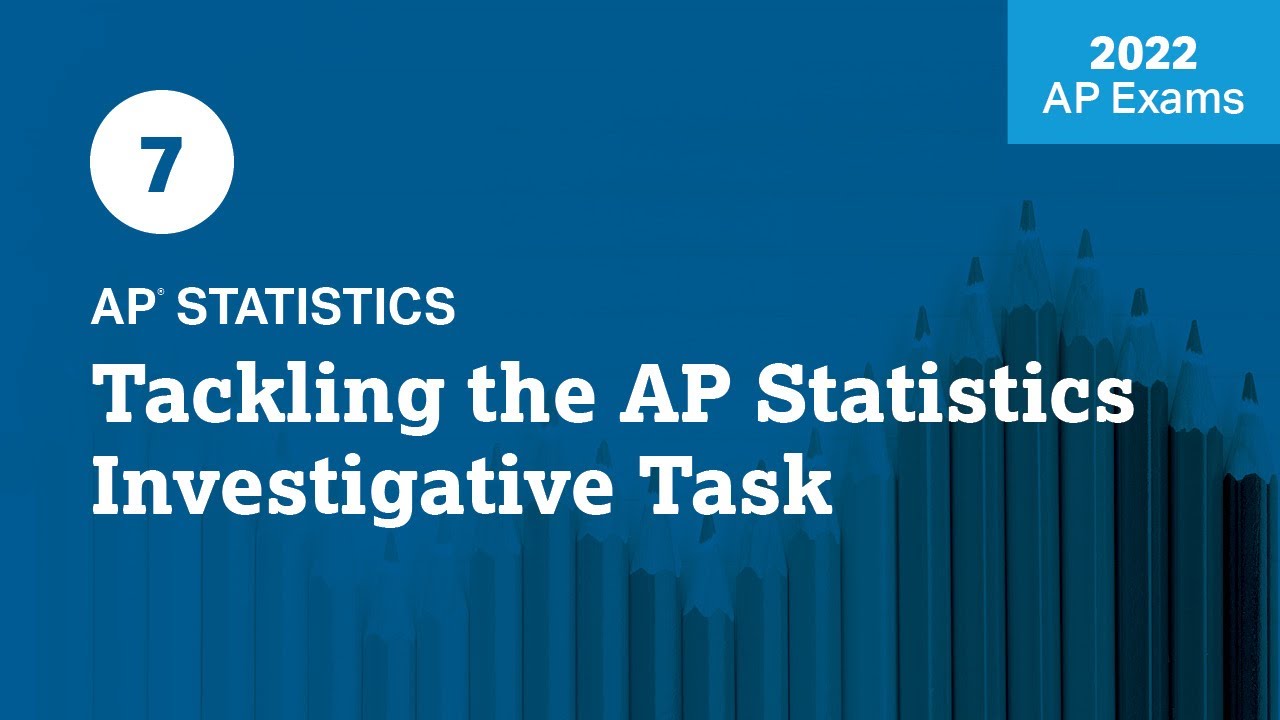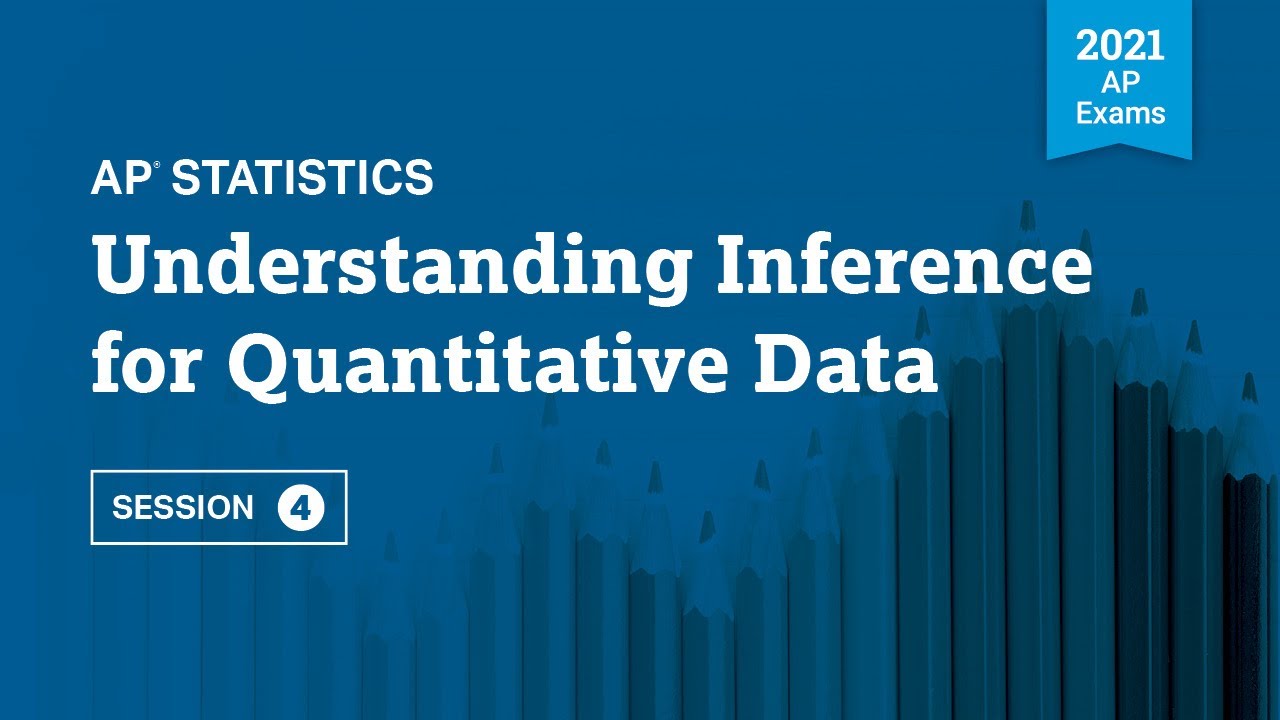8 | FRQ (Part B, Question 6: Investigative Task) | Practice Sessions | AP Statistics
TLDRIn this AP Daily practice session, Mr. Starnes guides students through an investigative task on comparing allergy treatment success rates at two clinics using a provided dataset. He emphasizes the importance of understanding relative frequencies and the limitations of observational studies in inferring causality. The session explores Simpson's paradox, a statistical phenomenon where trends can appear reversed when data is grouped differently, ultimately encouraging students to practice and develop strong statistical reasoning for the AP exam.
Takeaways
- 📚 Mr. Starnes introduces the session focused on free response and the investigative task for AP Statistics students.
- 🔍 The session builds upon the previous one, emphasizing the importance of trying the questions before watching the solution.
- 📈 The transcript includes a step-by-step guide on how to complete a table with relative frequencies of successful and unsuccessful treatments at two clinics.
- 📊 In comparing the success rates, it's crucial to look at relative frequencies rather than raw numbers to determine which clinic is more successful.
- 🤔 The script highlights the difference between observational studies and randomized experiments, noting that cause and effect cannot be inferred from the former.
- 📝 Part B of the task emphasizes that a statistically significant result from an observational study does not allow for a causal conclusion.
- 📉 The physician's conclusion from the mosaic plot is that Clinic B is more successful in treating both mild and severe allergies, but this conclusion is challenged.
- 🔑 The key to understanding the discrepancy in conclusions lies in recognizing Simpson's paradox, which shows how different groupings can lead to different interpretations of success rates.
- 📚 The physician's analysis and the students' analysis diverge due to the distribution of allergy severities treated at each clinic.
- 📈 Clinic A has a higher percentage of mild allergy sufferers, which contributes to its higher overall success rate, despite Clinic B having a higher success rate within each severity category.
- 📝 The session concludes with advice for students to continue preparing for the AP exam, using resources like AP Classroom for additional practice and review.
Q & A
What is the main focus of session 8 presented by Mr. Starnes?
-The main focus of session 8 is on free response, specifically the investigative task in AP statistics.
Why is it recommended to download and try the questions before watching the solution video?
-It is recommended to download and try the questions first so that students can identify where they struggle and gain more from the video by seeing the solution to those specific areas.
What is the importance of annotating keywords in the problem during the exam?
-Annotating keywords is important because the questions are word-intensive, and it helps to ensure that no important statistical words or numbers are missed.
What is the purpose of Part A1 in the script?
-The purpose of Part A1 is to complete a table by recording the relative frequencies of successful and unsuccessful treatments at each clinic.
How does Mr. Starnes calculate the relative frequency of unsuccessful treatments at Clinic A?
-Mr. Starnes calculates the relative frequency of unsuccessful treatments at Clinic A by dividing the number of unsuccessful treatments (51) by the total number of treatments (139), resulting in approximately 0.3669 or 36.69%.
What is the main question in Part A2, and how is it answered in the script?
-Part A2 asks which clinic is more successful in treating allergy sufferers based on the relative frequency table. The answer is that Clinic A appears to be more successful because it has a higher success rate (63.3%) compared to Clinic B (51.5%).
Why can't a statistically significant result from an observational study allow researchers to conclude causation, as discussed in Part B?
-A statistically significant result from an observational study cannot allow researchers to conclude causation because the patients were not randomly assigned to the clinics. Other variables, such as the severity of allergies, could affect the success rates.
What is the phenomenon known as Simpson's paradox, as mentioned in the script?
-Simpson's paradox is a phenomenon where a trend appears in several different groups of data but disappears or reverses when these groups are combined.
How does the physician in the script conclude that Clinic B is more successful for both mild and severe allergies?
-The physician concludes that Clinic B is more successful by looking at the relative proportions or percentages of successfully treated patients in the mild and severe allergy groups within Clinic B compared to Clinic A.
What advice does Mr. Starnes give to students preparing for the AP Statistics exam?
-Mr. Starnes advises students to continue preparing by using resources like AP Classroom for on-demand review videos, practicing with different questions, and working with classmates and teachers for feedback.
Why does Mr. Starnes emphasize the importance of working through the first few parts of an investigative task?
-Mr. Starnes emphasizes this because gaining confidence and earning points in the initial parts can prepare students for the more complex twists in the latter parts of the task, thus improving their overall performance.
Outlines
📚 AP Statistics Practice Session Introduction
In this introductory session, Mr. Starnes greets AP Statistics students and sets the stage for session 8, which is dedicated to the free response investigative task. He emphasizes the importance of engaging with the questions beforehand to maximize the benefits of the session. Mr. Starnes encourages students to download the questions and try them before watching the solution, and he provides a link for this purpose. He also highlights the significance of annotating key statistical terms and numbers within the problem to avoid missing any crucial details during the exam.
🔍 Analyzing Allergy Treatment Success Rates
This paragraph delves into the analysis of allergy treatment success rates at two specialized clinics. Mr. Starnes guides students through the process of comparing these rates using a provided data table. He instructs students to calculate relative frequencies and percentages of successful and unsuccessful treatments for each clinic. The summary includes the calculation of these frequencies for both Clinic A and Clinic B, revealing that Clinic A has a higher success rate. The paragraph also addresses the question of which clinic is more successful in treating allergy sufferers, justifying the answer based on the comparison of successful treatment percentages.
🚫 Limitations of Causal Inference in Observational Studies
In this segment, Mr. Starnes discusses the limitations of making causal inferences from the results of an observational study. He clarifies that even if there is a statistically significant difference in treatment success rates between the two clinics, it does not imply that the treatment at one clinic causes a higher success rate. This is because the patients were not randomly assigned to the clinics, and there may be other variables affecting the success rates, such as the severity of allergies treated at each clinic. The paragraph also introduces the concept of Simpson's paradox, which highlights the importance of considering the context and structure of data when drawing conclusions.
📊 Mosaic Plot Analysis and Simpson's Paradox
The final paragraph focuses on the analysis of a mosaic plot constructed by a physician, which categorizes patients by the severity of their allergies and the success of their treatments at each clinic. The physician's conclusion that Clinic B is more successful for both mild and severe allergies is contrasted with the overall success rate of Clinic A, which treats a higher percentage of mild allergy sufferers. The discussion reveals that Clinic A's higher overall success rate is due to its higher proportion of mild allergy cases, which are generally easier to treat. This discrepancy in conclusions exemplifies Simpson's paradox, where the relationship between variables can reverse when data is aggregated or disaggregated.
Mindmap
Keywords
💡AP Daily Practice Sessions
💡Investigative Task
💡Relative Frequencies
💡Mosaic Plot
💡Allergy Sufferers
💡Statistical Significance
💡Cause and Effect
💡Observational Study
💡Simpson's Paradox
💡Random Samples
💡Descriptive Statistics
Highlights
Introduction to AP Daily practice sessions with Mr. Starnes.
Focus on session 8, which is about free response and the investigative task.
Instructions to download and attempt the questions before watching the solution.
Emphasis on annotating keywords in the exam to avoid missing important statistical information.
Explanation of completing a table with relative frequencies for successful and unsuccessful treatments.
Calculation of relative frequencies for Clinic A with percentages provided.
Calculation of relative frequencies for Clinic B, noting the higher percentage of unsuccessful treatments.
Part A2's question on determining which clinic is more successful based on relative frequencies.
Justification for Clinic A being more successful in treating allergy sufferers.
Part B's discussion on the limitations of inferring cause and effect from an observational study.
Explanation of why a statistically significant result does not imply causation in the study design.
Introduction of a physician's analysis using a mosaic plot to separate patients by allergy severity.
Physician's conclusion that Clinic B is more successful for both mild and severe allergy sufferers.
Analysis of which allergy severity is treated more successfully at each individual clinic.
Justification of Clinic A's higher success rate for mild allergies and Clinic B's for severe allergies.
Part C2's question on which allergy severity is more likely to be treated at each clinic, using the mosaic plot.
Conclusion that Clinic A treats more mild allergy sufferers, while Clinic B treats more severe cases.
Final investigative task analysis combining all previous parts to compare with the physician's conclusion.
Introduction of Simpson's paradox as a statistical phenomenon explaining the discrepancy in conclusions.
Encouragement for students to continue preparing for the AP Statistics exam using additional resources.
Advice to work with peers and teachers for the best preparation and performance on the AP exam.
Closing remarks with best wishes for success on the AP exam.
Transcripts
Browse More Related Video

7 | FRQ (Part B, Question 6: Investigative Task) | Practice Sessions | AP Statistics

5 | MCQ | Practice Sessions | AP Statistics

2021 Live Review 7 | AP Statistics | Taming the Investigative Task on the AP Statistics Exam

2022 Live Review 7 | AP Statistics | Tackling the AP Statistics Investigative Task

2021 Live Review 4 | AP Statistics | Understanding Inference for Quantitative Data

6 | FRQ | Practice Sessions | AP Physics C: Mechanics
5.0 / 5 (0 votes)
Thanks for rating: